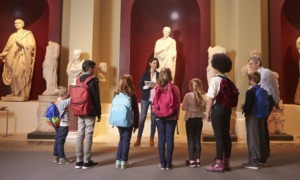Now that the ink is dry on the recently reauthorized Elementary and Secondary Education Act (ESEA), it’s time to examine the implications of this legislation for youth work. Of particular note is the section that covers the 21st Century Community Learning Centers – a program designed to open public schools in the non-school hours, expand learning opportunities, and support partnerships between schools and community resources.
Although this program is five years old, the revised legislation dramatically changes its contours. These key changes present a crucial opportunity for youth agencies:
• Youth-serving organizations are now considered “eligible entities” that may apply directly for grants – in contrast to prior years, when only schools or school districts could apply.
• The grants will be administered through state departments of education – in contrast to prior years, when grants were administered by the federal government.
• The size of the program continues to grow – from $850 million last year to $1 billion in fiscal year 2002.
• Programmatically, there is an increased emphasis on promoting students’ academic success through educational support and enrichment, including several types of programs that build on youth work’s strengths – such as arts and music, tutoring and mentoring, character education and counseling.
Youth organizations fought hard for the opportunity to apply directly for 21st Century program money. Now that schools and youth agencies are both eligible, local decisions will be critical in determining which groups are in the strongest position to take the lead.
Youth organizations are well-advised to seize the initiative in this new and competitive environment by assessing their strengths and marketing their “value-added” capabilities to local schools. The reality facing youth organizations now is that, although we cannot apply for 21st Century funds without a public school partner, schools can apply without us. We must therefore sell the worth of our services to our education colleagues.
The astute youth agency will do its homework by learning about trends in its public schools, by building connections at multiple levels within the school system, and by determining how its strengths can address needs as seen through the eyes of public school partners.
For example, savvy youth workers can offer enrichment programs (literacy, math, science, technology) to enhance a school’s core instructional services. Such programs can address the school’s constant worries about whether its students will meet rigorous new academic standards required by 49 states.
In today’s high-stakes educational environment, public school partners may be less interested in our social, cultural and recreational programs than in educational enrichment. Our best strategy is to “build the bridge where the stream is narrowest” (focusing on academics) and to expand from there.
Most educators believe, as youth workers do, in meeting the needs of the whole child. Our approach should advocate balance: making sure that young people have access to expanded opportunities in all areas, including the social, emotional, physical and moral, as well as cognitive arenas.
Schools may also be interested in partnering with youth organizations that offer skills in preventing substance abuse, adolescent pregnancy and violence – again, priorities of the legislation. By joining forces with youth agencies and building on their strengths, public schools can address documented student needs while maintaining primary focus on their central mission of academic learning.
But in our efforts to be responsive partners, youth organizations should be wary of over-promising, especially around academic remediation. Schools may want our help to teach non-readers to read, or to teach math skills to poor performers. While some youth groups may be skilled in these areas, many are not, particularly in helping children who have real learning disabilities or who have fallen seriously behind in core academic subjects. Although a well-balanced youth development program might include tutoring and homework help, heavy doses of academic remediation are not likely to play to our strengths.
Instead, we should offer a different vision of positive youth development – one that truly expands young people’s learning opportunities, that offers challenge and authentic engagement, and that really helps students prepare for their futures in the 21st century.






























